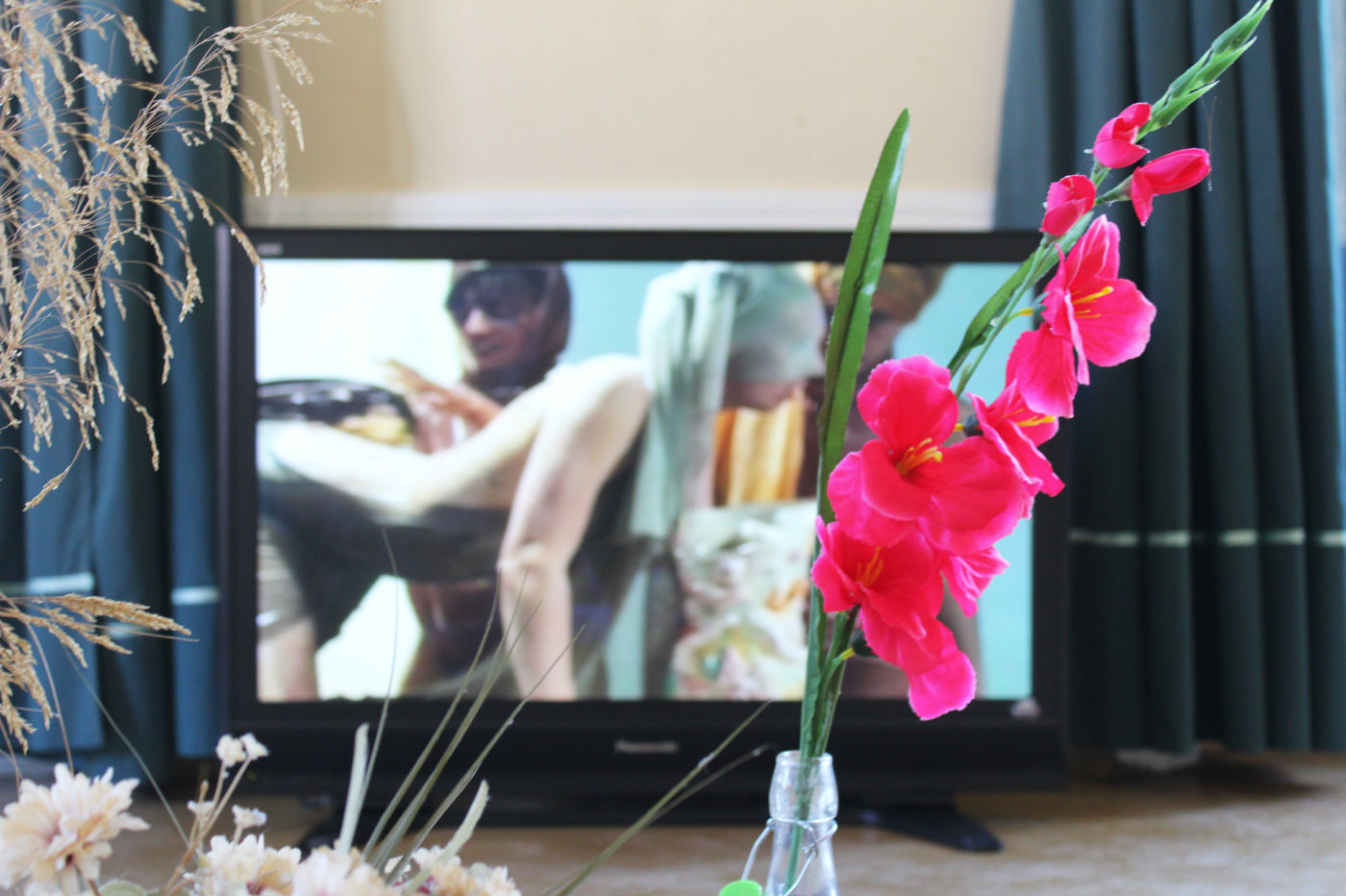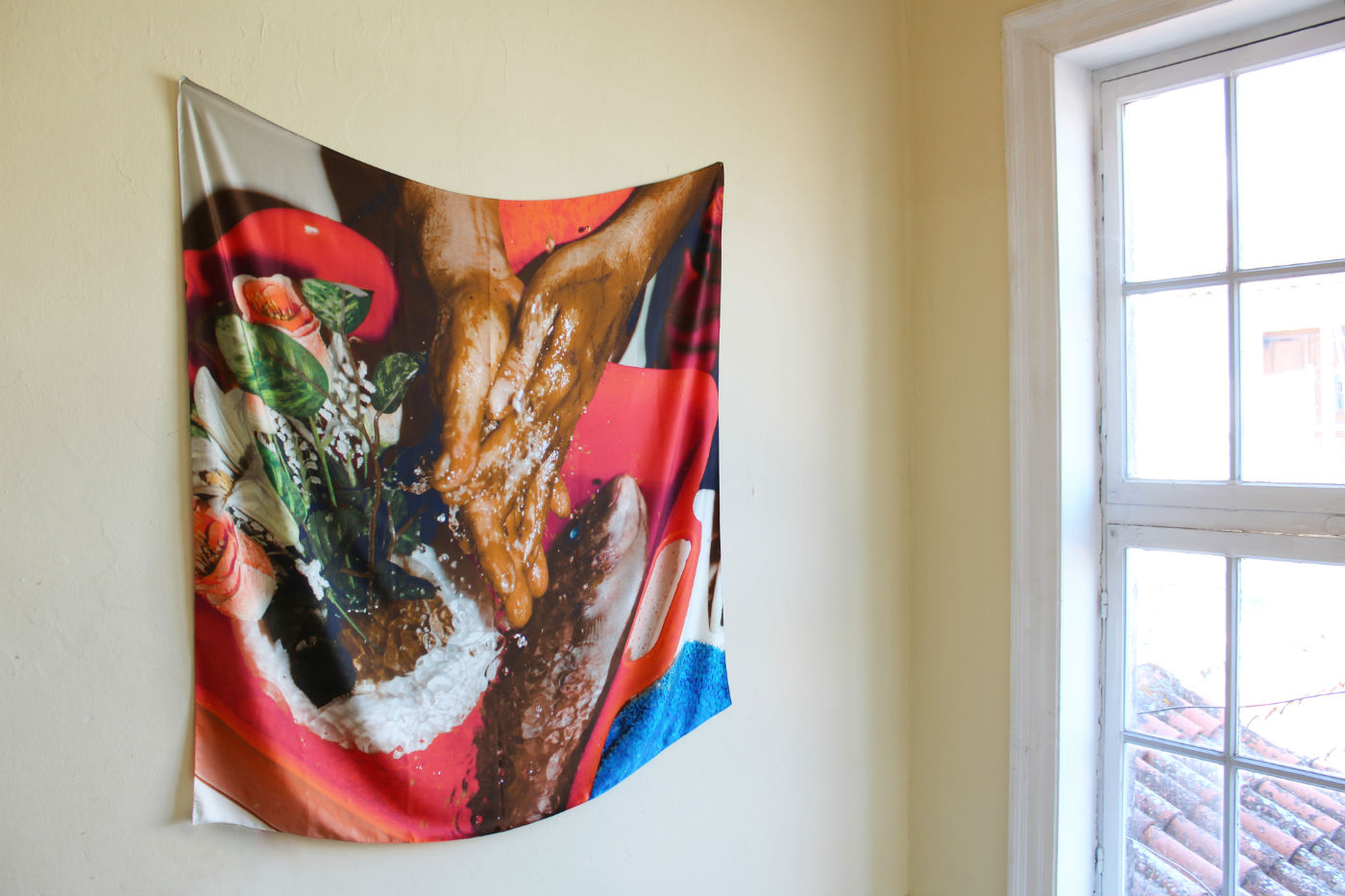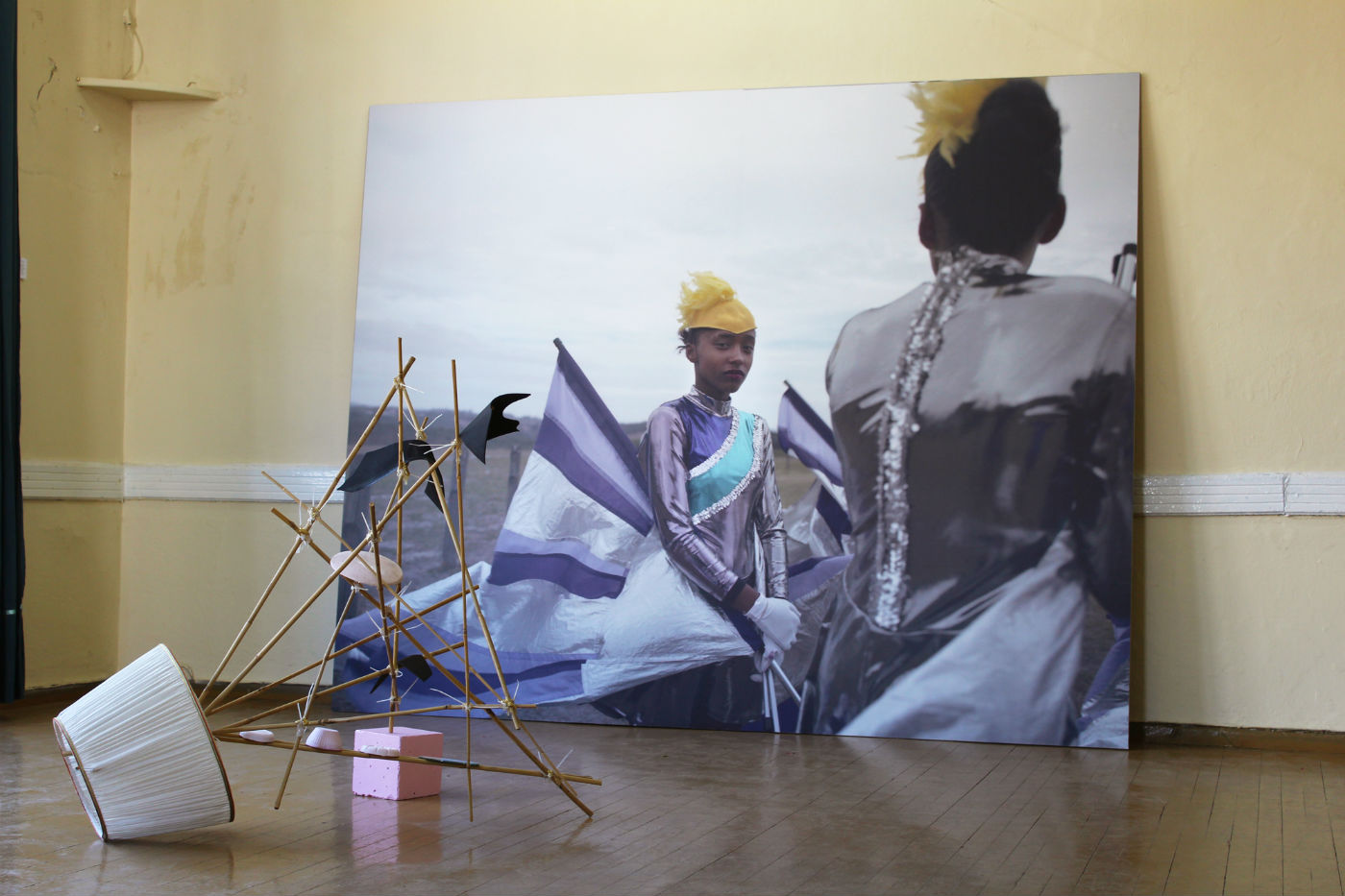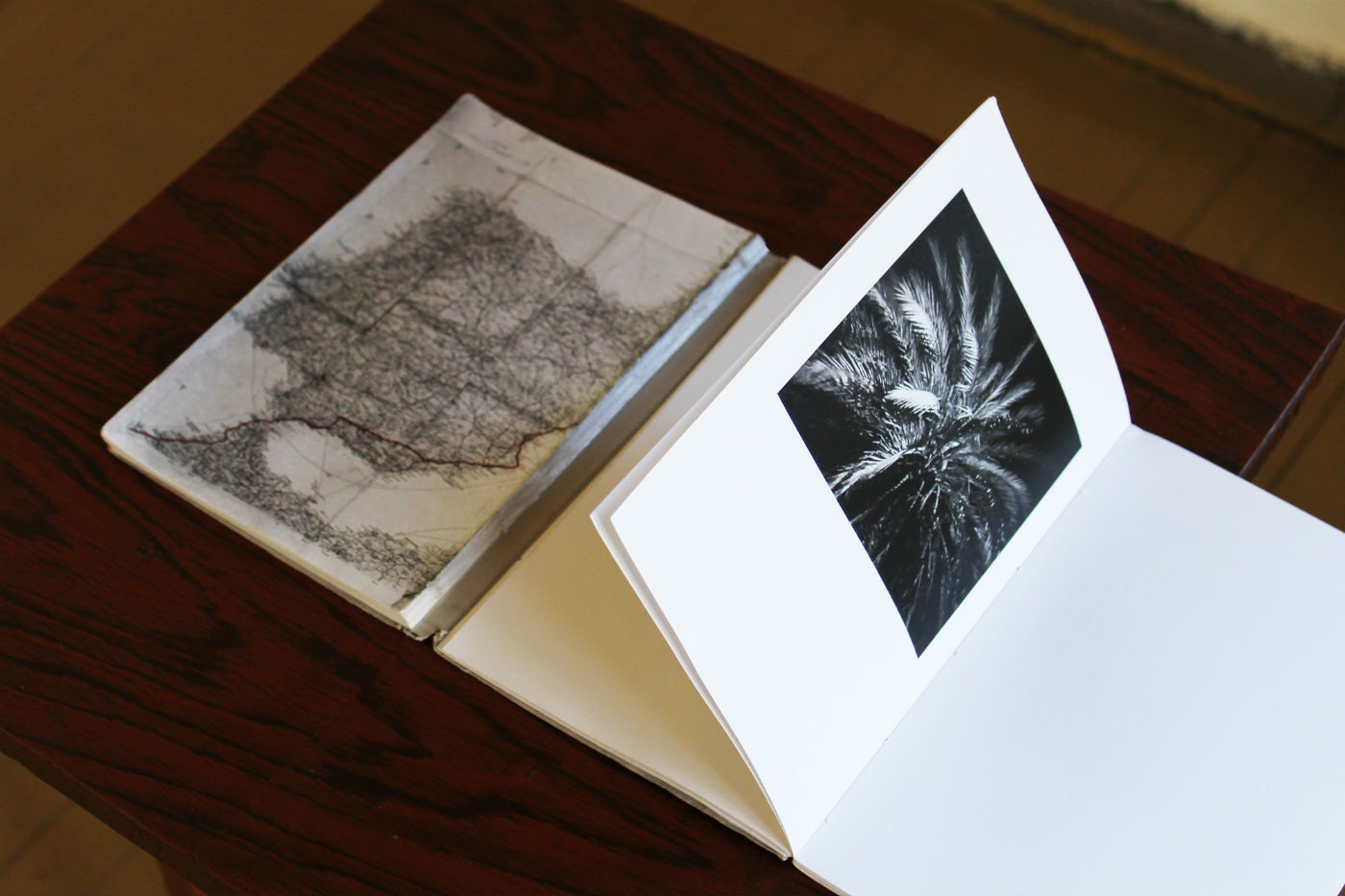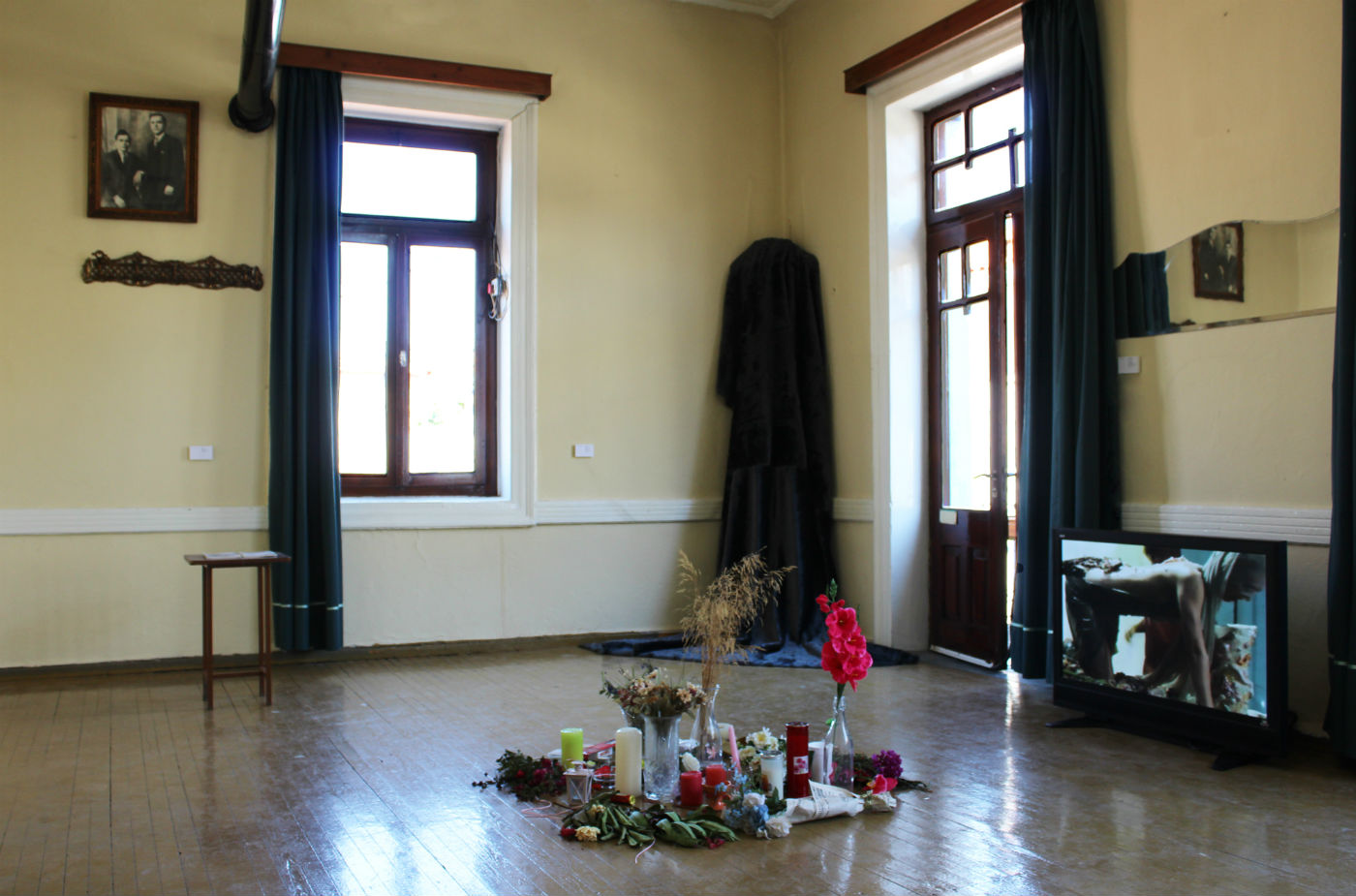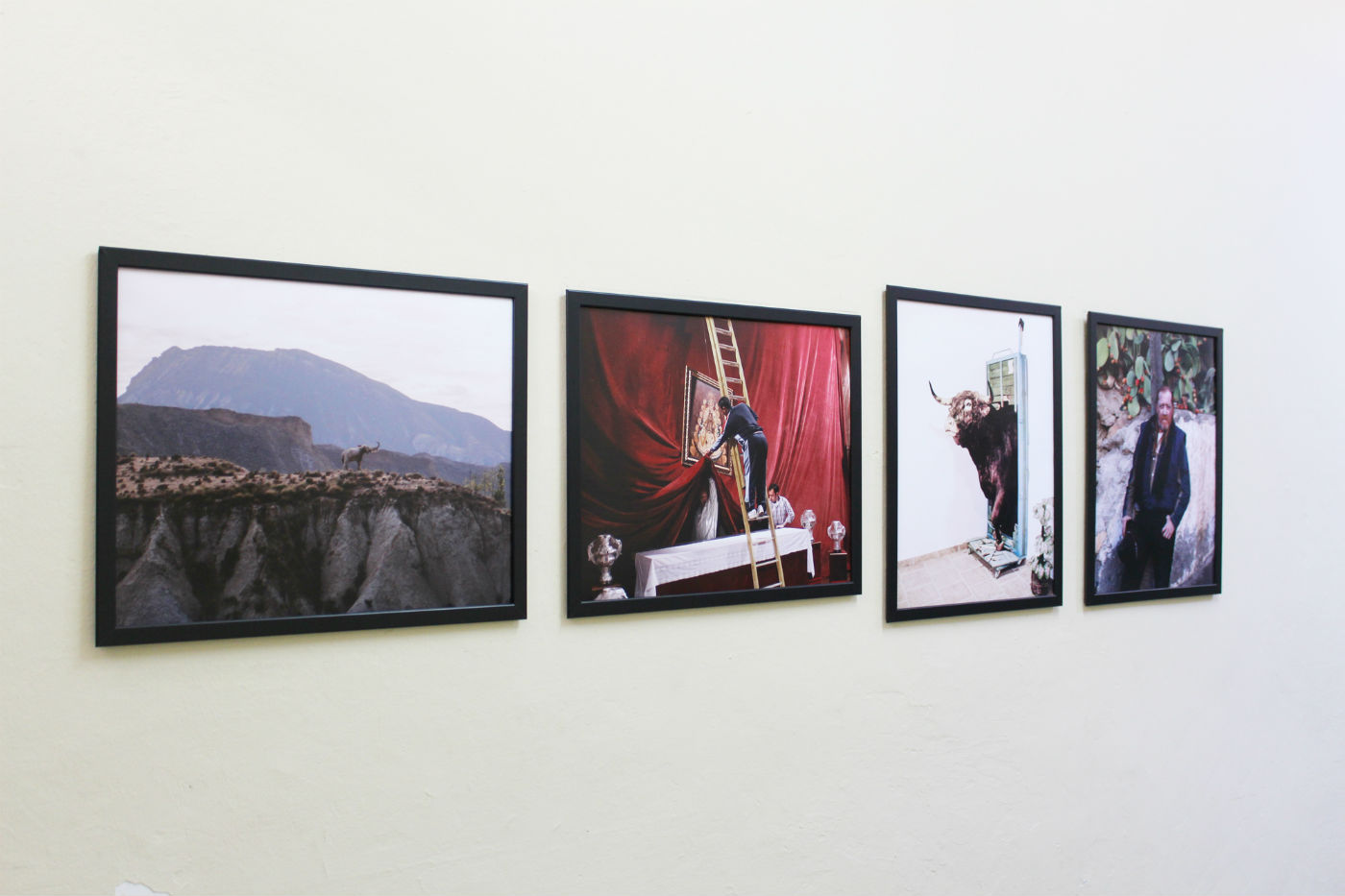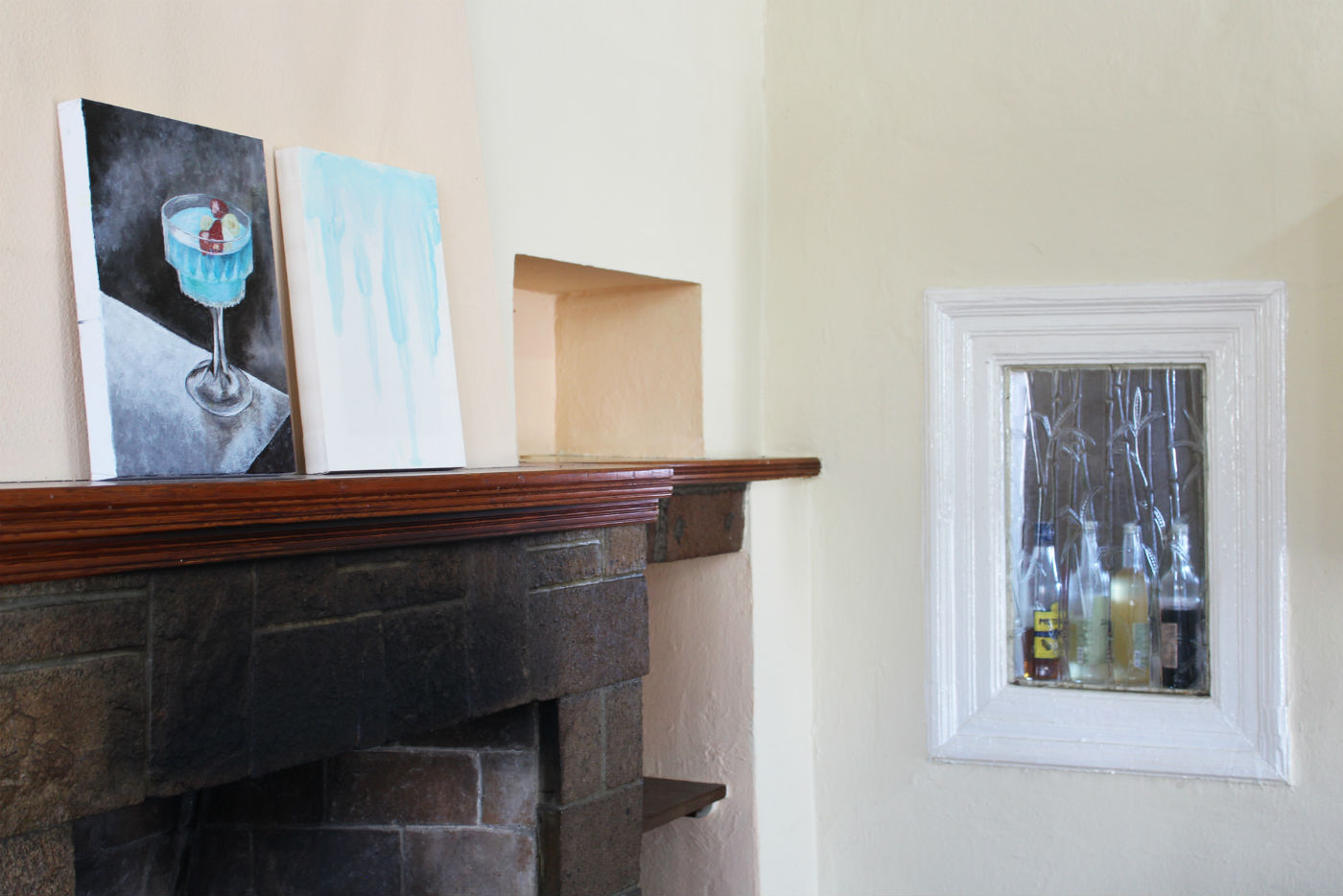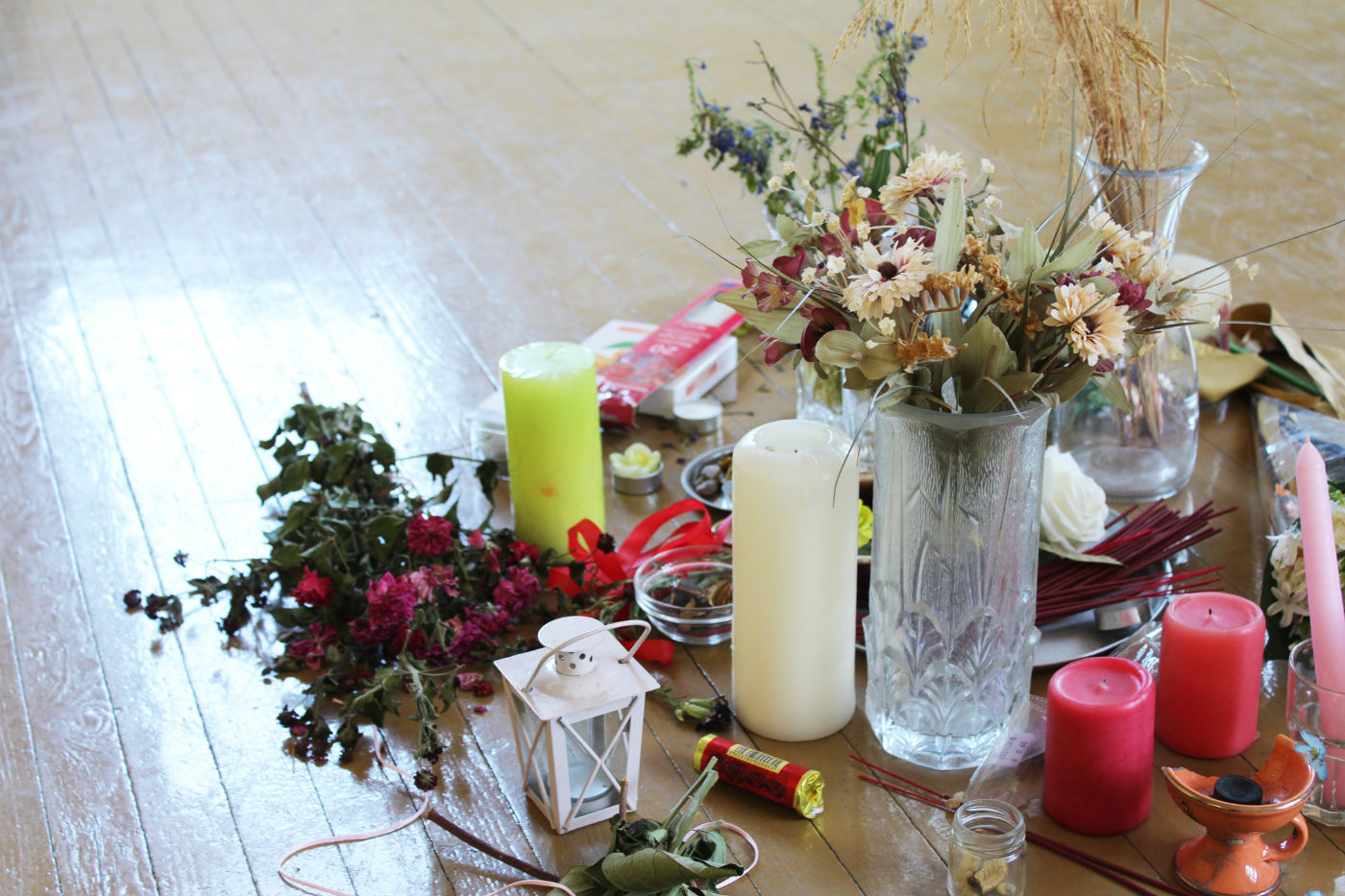For its fifth annual event on the island of Lesvos, the nomadic art platform K-Gold Temporary Gallery presented a group exhibition inside an historic building in the town of Kalloni, with the participation of eighteen artists from Greece and abroad. The exhibition was curated by Nicolas Vamvouklis, a Lesvos-born, Milan-based curator and artist, who is also the platform’s founder.
Conceived as a celebration for the platform’s fifth anniversary, the exhibition How to Fall with Grace explores the many aspects of celebration as seen in rituals, consumption, offerings, communal functions, social roles, ecstasy and decay. This the exhibition achieves by organising its content under three general ideas that correspond to the different phases of a celebratory event: the preparation, the climax and the aftermath. The spatial organisation of the works doesn’t follow a strict tripartite format, but instead mixes the works together, creating a constant back and forth between emotional states, symbolic power and artistic intent.
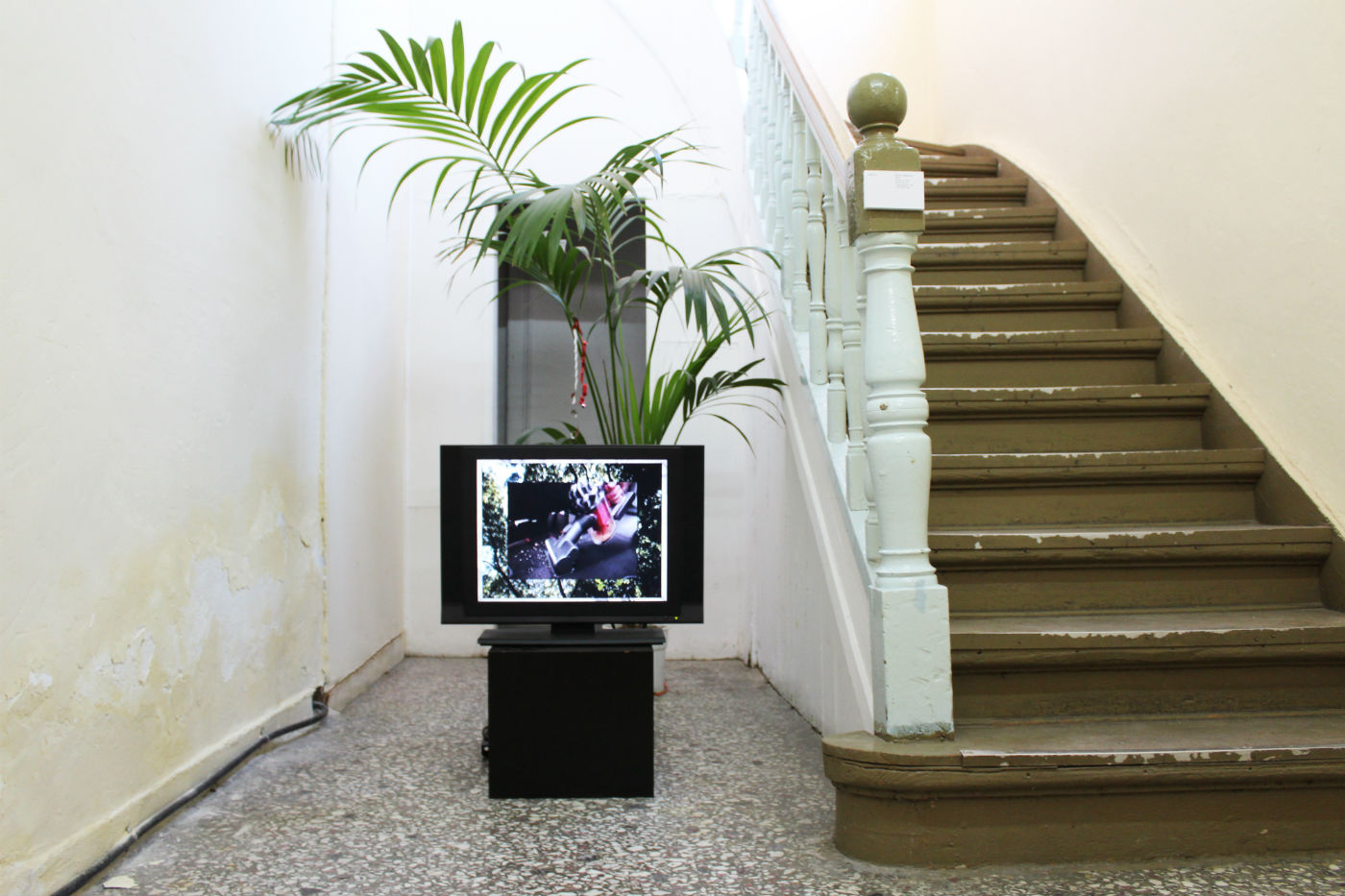
The exhibition took place in a former members’ club called Arisvi Club, which used to be a meeting point for literati and the local bourgeoisie in the early 20th century (Lesvos was still under Ottoman rule at that time). The Arisvi Club then became Kalloni Cultural Centre in 1928, and still maintains that function by hosting cultural events and a collection of some 6.000 rare volumes by Greek and foreign authors.
Situated on the upper floor of an old building right in the middle of the town, Arisvi Club retains its original wooden floors and furniture, with the whole setting reminding of an old middle-class salon. This feature was one of the reasons why the venue was selected for this exhibition, as curator Nicolas Vamvouklis evidently wanted to highlight the domestic and private aspects of celebration, and create a link with consumption and the debauchery of private parties.
One of the most prevalent themes in How to Fall with Grace is that of transformation of identity through ritual. The voluptuous work of Valinia Svoronou (Dense Coat Configuration, 2017) is particularly resonant in this case, as it evokes a wolf’s hide. A glamorous performance by Pierre Magendie during opening night (Ite Missa Est, 2018) parodies the ceremonial through an extravagant display of handmade costumes and a looped sample of Guillaume de Machaut’s Ite, Missa Est (played live on a recorder by the performer). On the same note, Zoe Williams’s Ceremony of the Void (2017) is a video showing a fantastical banquet that gradually transforms into a frenzy. Next to it, a sculpture by Nana Sachini (Collection of Unfinished Houses, 2013) confirms the show’s domestic element and tells a story of coming-of-age by balancing pink desserts on a teetering bamboo structure tinted with golden glitter.
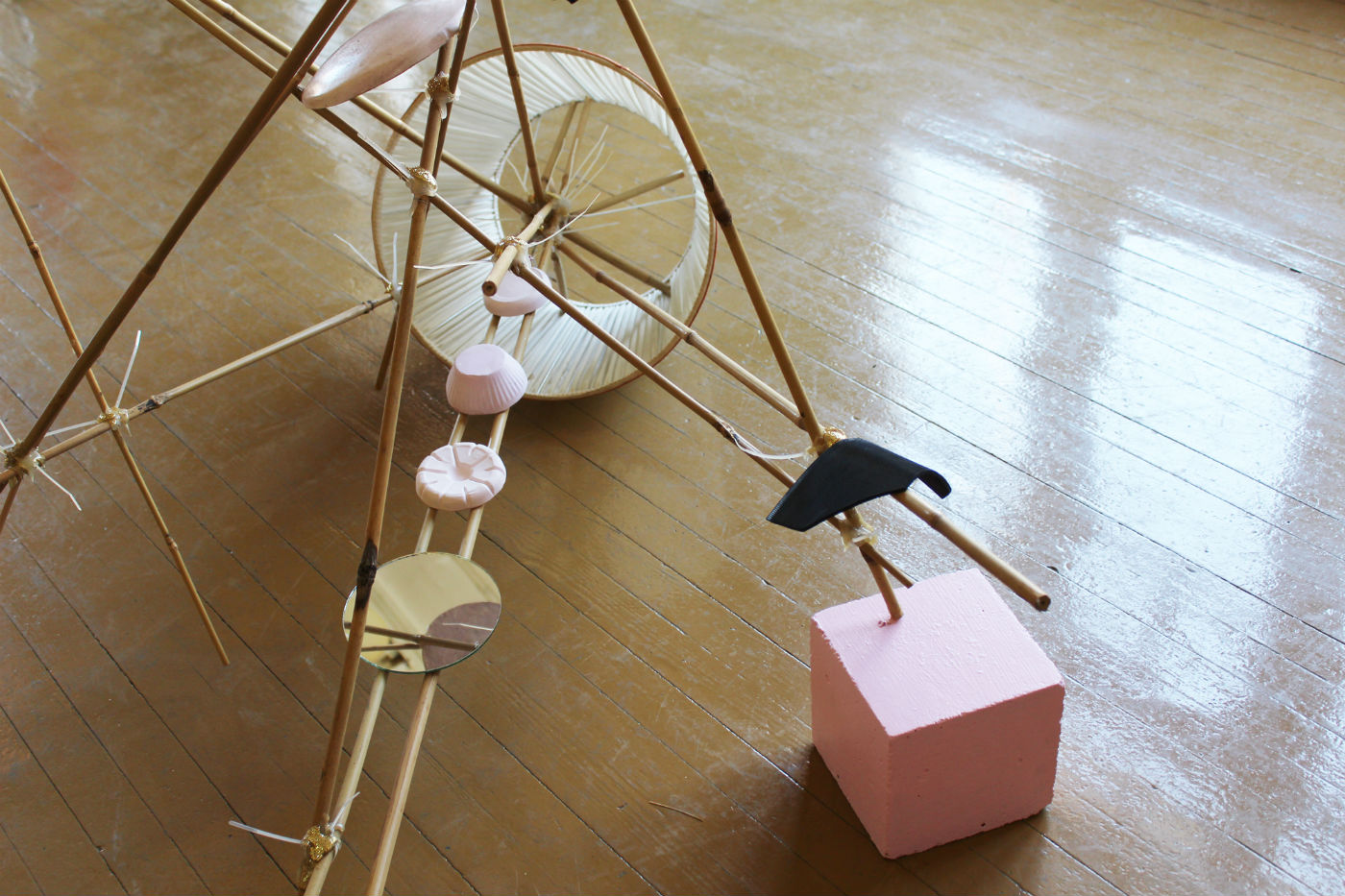
Despite its celebratory theme, the exhibition is unmistakably sombre and self-aware of its macabre undertones, as seen in works that comment on the temporality of life and the inevitability of decay. In Greta Alfaro’s video In Ictu Oculi (2009), a flock of vultures descends from the sky to devour a meal set on an elegant table, leaving only toppled chairs and empty plates behind. Meanwhile, in a gesture of remembrance, Dan Stockholm (Untitled, (Spontaneous Amemorial), 2010-18) created an impromptu memorial like the ones sometimes found in cities to signify the place a person died. His work — an assemblage of dying flowers, candles and food — was placed right in the middle of the space, as if to become the conceptual centre around which adjacent works (and visitors) revolved.
As part of this year’s exhibition, K-Gold Temporary Gallery invited Antwerp-based artist Yorgos Maraziotis to create a new work inside a former shop on Arisvi Club’s ground floor. A continuation of Maraziotis’s recent work on historical trauma, identity and violence, the installation A Still Life (The Evening of 17th October 2037) (2018) consists of a group of fragile sculptures scattered in the space, a mural painted in situ and fluorescent lighting illuminating the space.
In this work, the artist uses perishable materials such as metallic paper in combination with metal and plaster to create sculptural gestures that manifest like three-dimensional drawings, creating an architecture of tension and negative space that the viewer has to navigate and reflect upon. The shiny paper ribbons, although speaking of celebration and joy, are at the same time impermanent and frail. Meanwhile, three fluorescent lamps in different colours illuminate the space, and make the sculptures cast a triple shadow on the floor, which adds to the work’s ambiguous tension.

By condensing meaning and stripping form to its bare minimum, Maraziotis conjures a painful landscape of dignified loss, where the brilliant colours of a glorious past are now reduced to a feeble ember, a memory of grace after the fall. And although grace persists, its impact is so faint that indeed feels too fragile to touch. The combination of calmness and urgency in the work is unnerving, as if an ancient Greek column were hanging from the ceiling by a single silken thread.
The photography booklet by Karim El Maktafi (Hayati, 2017) relates to the artist’s negotiation with his own identity as a second-generation Italian of Moroccan descent. The booklet contains images shot with a phone camera in Italy and Morocco, as a tracing of the thread of the artist’s origins. In this case, celebration comes not as a wild party but as a quiet discovery — an acknowledgement of lineage and identity that enables the past to be remembered and the fall from grace (in this case, the trauma of migration) to become bearable. In a similar way, Anastasia Mina’s evanescent photo from an old festival in Cyprus (Untitled, 2014) also salvages the past, and at the same time mythologises it by spraying the original image with multiple layers of gold pigment.
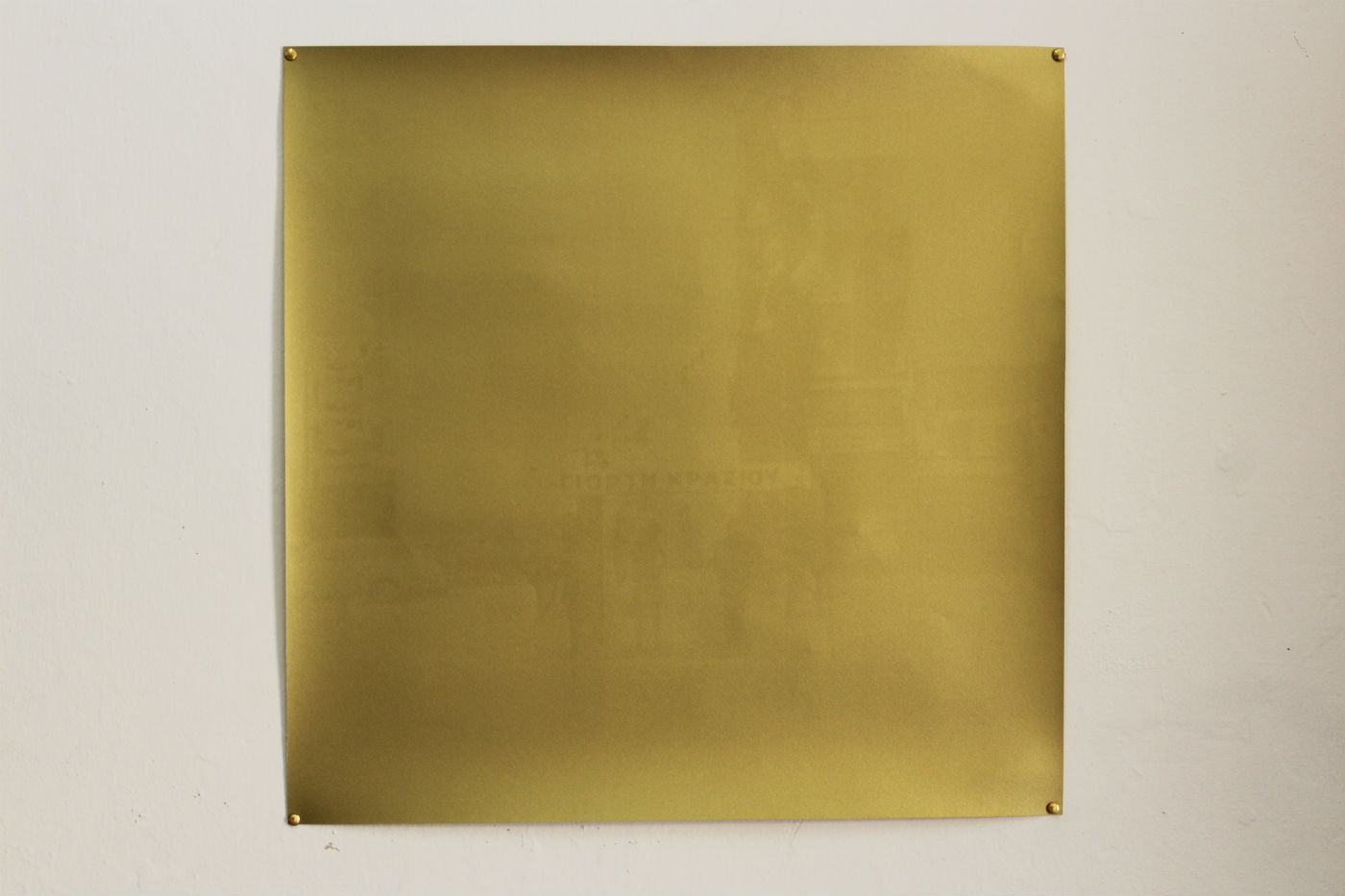
Another photographic image, this time printed on silk by SERAPIS (Washing Hands, 2018), we see a Philippino maritime worker performing a ritual of purification using a dead fish, salt water and motor oil. Again, the macabre meets the joyful, since every ritual of celebration is both an affirmation and an evasion of death. In Arisvi Club’s library room, Vasilis Papageorgiou installed a neon light sculpture depicting a blazing flame (Homage to the Dryly Grasses, 2014), referencing the ancient practice of farmers burning their fields to enhance their fertility. And although the exposed technical aspect of the work makes the whole concept more relatable, and reminds us that the very reason for burning a dry field is to help it grow anew, it is impossible not to think of dry grass as a metaphor for human mortality:
For all flesh is like grass
and all its glory like the flower of the grass;
the grass withers and the flower falls [...]
(1 Peter 1: 24)
The arched narrative of rise, climax and decay is perhaps the most common pattern in this world, from the life and death of stars and empires to circadian cycles and sexual intercourse. How to Fall with Grace chooses to focus on the human aspects of this ubiquitous pattern, and connect its processes to what is intimate, imperfect and mortal. Nevertheless, the surprise effect it conjures really has an impact. Because it first hands us a glittery invitation to a party, only to then treat us with biting humour, fleeting moments of beauty and existential angst.

